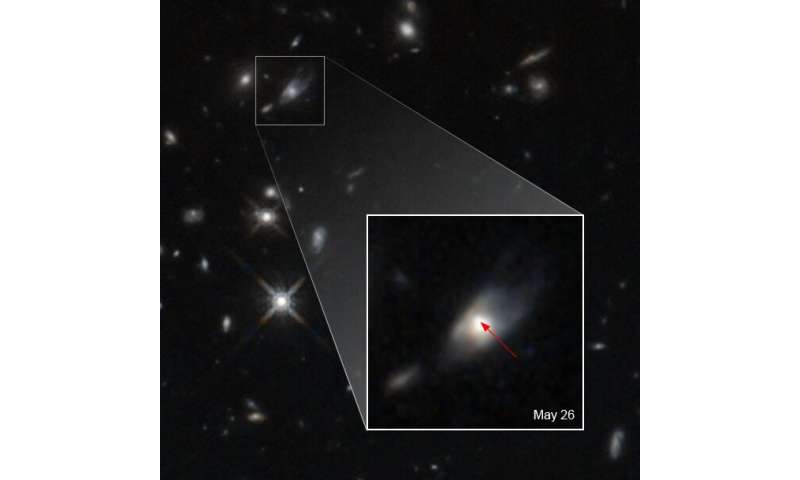Long ago and far across the universe, an enormous burst of gamma rays unleashed more energy in a half-second than the sun will produce over its entire 10-billion-year lifetime.
After examining the incredibly bright burst with optical, X-ray, near-infrared and radio wavelengths, a Northwestern University-led astrophysics team believes it potentially spotted the birth of a magnetar.
Researchers believe the magnetar was formed by two neutron stars merging, which has never before been observed. The merger resulted in a brilliant kilonova—the brightest ever seen—whose light finally reached Earth on May 22, 2020.
The light first came as a blast of gamma-rays, called a short gamma-ray burst.
Continued...
Source
After examining the incredibly bright burst with optical, X-ray, near-infrared and radio wavelengths, a Northwestern University-led astrophysics team believes it potentially spotted the birth of a magnetar.
Researchers believe the magnetar was formed by two neutron stars merging, which has never before been observed. The merger resulted in a brilliant kilonova—the brightest ever seen—whose light finally reached Earth on May 22, 2020.
The light first came as a blast of gamma-rays, called a short gamma-ray burst.
Continued...
Source






















